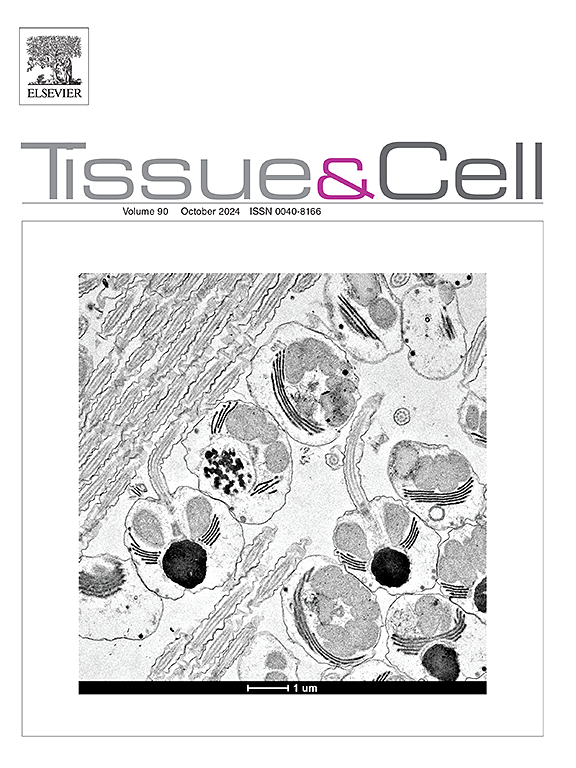Effects of mesenchymal stem cells on repair of injured endometrium in mice
IF 2.7
4区 生物学
Q1 ANATOMY & MORPHOLOGY
引用次数: 0
Abstract
Endometrial damage severely affects women's reproductive health and function. Although various treatments are available, their efficacy remains generally unsatisfactory. Mesenchymal stem cells (MSCs) possess multidirectional differentiation abilities and immunoregulation. To evaluate whether direct MSC transplantation into the uterine cavity enhances endometrial thickness, an animal model with thin endometrium was developed by administering ethanol into the uterine cavity. Our study aimed to observe and compare repair effects about three types of MSCs on endometrial injury, including menstrual blood-derived MSCs (MenSCs), bone marrow MSCs (BMSCs), and umbilical cord-derived mesenchymal stem cells (UC-MSCs). HE and Masson staining were used to assess endometrial morphology and fibrosis in the third estrous period post-operation. Immunohistochemistry and western blot were utilized to detect the expression of marker proteins in endometrial tissue. Endometrial thickness and protein expression in the MSC transplantation groups showed a notable improvement compared to the control group, though still below normal levels. Among MSC transplantation groups, no statistical difference was observed between MenSC and BMSC groups in endometrial thickness or ItgαVβ3 expression, but MenSCs showed higher levels than UC-MSCs, with statistical significance. CK18 and Vimentin expression in the MenSC and BMSC groups were similarly higher than UC-MSCs, with no significant difference. VEGF expression indicated that MenSCs outperformed both BMSCs and UC-MSCs. In conclusion, all three types of MSCs improved endometrial thickness and regeneration when transplanted into the injured endometrium. MenSCs demonstrated the greatest potential in promoting endometrial regeneration and improving receptivity, suggesting a promising new approach for treating endometrial injury.
求助全文
约1分钟内获得全文
求助全文
来源期刊

Tissue & cell
医学-解剖学与形态学
CiteScore
3.90
自引率
0.00%
发文量
234
期刊介绍:
Tissue and Cell is devoted to original research on the organization of cells, subcellular and extracellular components at all levels, including the grouping and interrelations of cells in tissues and organs. The journal encourages submission of ultrastructural studies that provide novel insights into structure, function and physiology of cells and tissues, in health and disease. Bioengineering and stem cells studies focused on the description of morphological and/or histological data are also welcomed.
Studies investigating the effect of compounds and/or substances on structure of cells and tissues are generally outside the scope of this journal. For consideration, studies should contain a clear rationale on the use of (a) given substance(s), have a compelling morphological and structural focus and present novel incremental findings from previous literature.
 求助内容:
求助内容: 应助结果提醒方式:
应助结果提醒方式:


